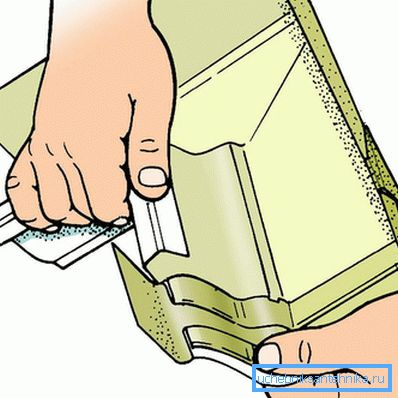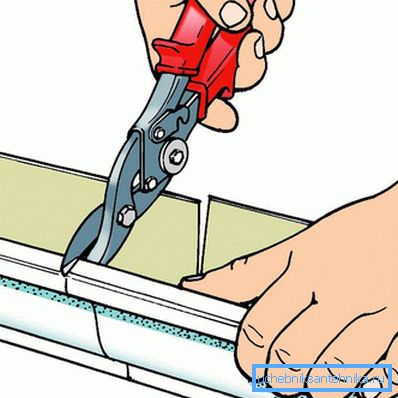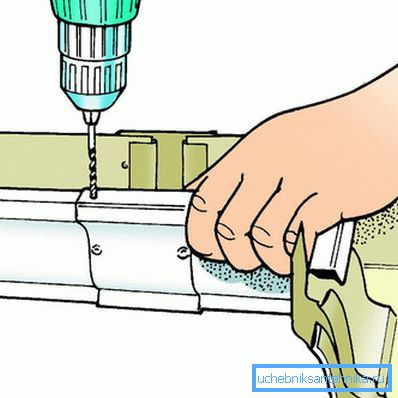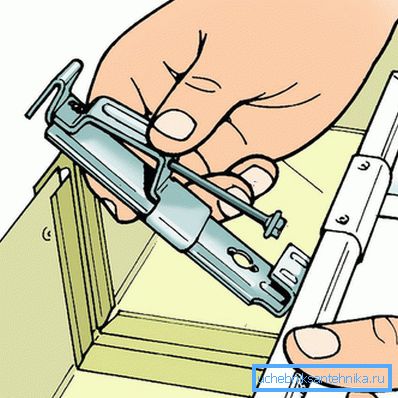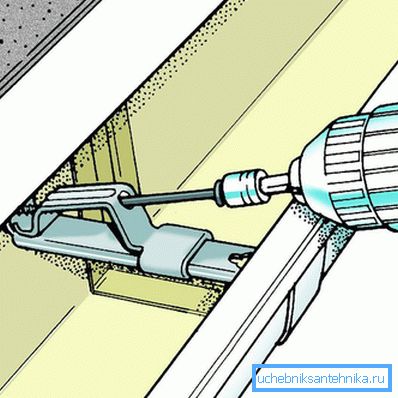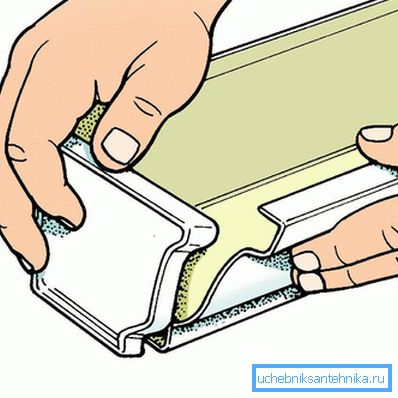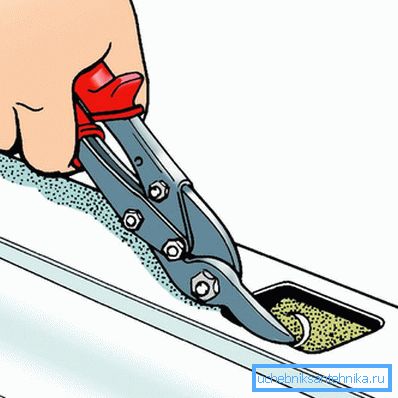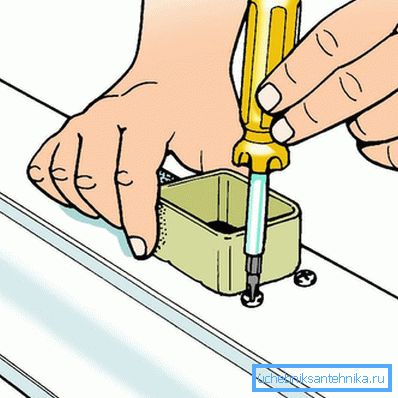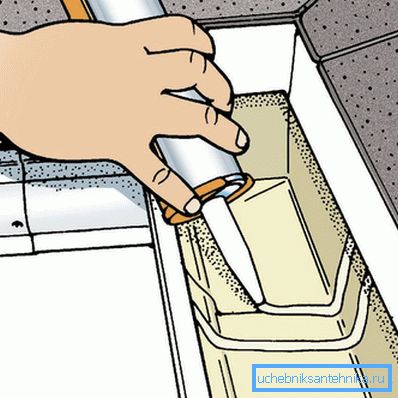How to make a drain yourself
If you are building a house or renovating an old building, you need to pay close attention to the roof drainage system. The integrity of your walls and the foundation will depend on its availability and proper construction. Moisture that is not collected in the ebb will penetrate the foundation and destroy it. Literally in ten years the first cracks will appear, which will later cause the destruction of the building. Drainage structures are intended to prevent these negative manifestations. Let's figure out how to do a drain yourself.
Materials
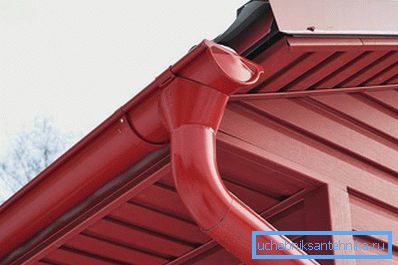
In fashion today, two main materials that are used in the manufacture of drainpipes - metal and plastic. A system of metal elements is somewhat more expensive. Gradually, dents and various scratches appear on the surface, which can further promote the appearance of corrosion. Therefore, in order not to spend money on periodic treatment with anti-corrosion compounds or replacement of system elements, make your choice in favor of galvanized material. He is able to serve for quite a long time.
Plastic is considered a more durable material and does not require additional protective treatment. Its advantage is a variety of color shades, allowing to select drainage systems in the tone of the main facade and roofing. But at low temperatures, this material becomes quite fragile, it cracks and loses its tightness.
Elements of the drainage system
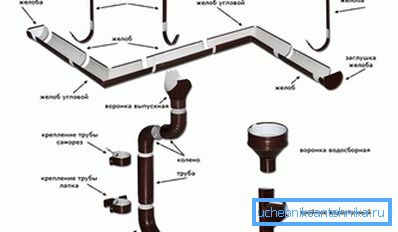
There are six main elements:
- pipes,
- swivel elements
- funnels
- gutter
- stubs
- mounting hardware.
It’s pretty easy to calculate the number and length of each item. First of all - the footage of the gutter channel. To do this, the measurement of the entire perimeter is measured, where it is planned to install drainage. Next, determine the number of funnels. At ten meters of gutters set one. Masters advise, with a length of more than ten meters, to arrange several points of discharge. According to the number of funnels, the number of pipes is taken. The length of one is equal to the distance from the funnel to the surface of the earth. Turning elements are determined based on the design features of the roof.
Assembly work
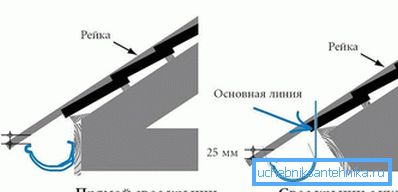
The main rule is to respect the tightness. When installing the gutters, you must observe a small slope of two to three degrees, so that the water does not stand and immediately flowed. First of all, mounting brackets are mounted:
- for each straight section from the edge of the roof to the funnel, two extreme brackets are mounted, taking into account the chosen inclination angle,
- between them the cord is tensioned, through which intermediate fasteners will be installed,
- intermediate brackets are being mounted. The cord will allow to perform the work smoothly, with observance of the slope in the right direction. The interval between the holders depends on the material of the system:
- from metal - 1000 mm,
- from plastic - 600 mm.

Tip! Assembling the gutters in order to preserve tightness, work should be carried out along the direction of the water flow. Assembling the pipe, you need to start work from the funnel and move to the ground!
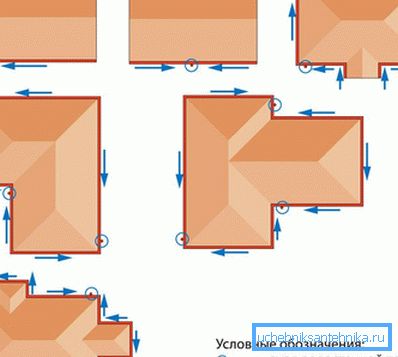
Observe the slope for water flow. It should be 2–5 mm per meter of gutter length.
Gutters must be connected with an overlap, a sealing compound may be used at the docking sites.
The brackets are best installed more often per each meter of the gutter. This will give the system additional strength.

Pipe clamps are installed at the discretion, based on the height of the wall.
Detailed video tutorial, see below:
Purchase or make yourself?
If funds permit, you can purchase all the elements of the drain. And if the funds do not allow, consider how to make a pipe or chute. To do this, you must purchase a galvanized sheet of 7? 8 mm thickness. Then you can get to work:
- we bend the edge necessary for the folded joint;
- we roll up the tin in the form of a pipe or make a chute;
- Three components are made for the funnel - glass, rim and cone. At the same time, it is necessary to ensure compliance with the diameters so that subsequently no leakage at the joints will occur. All elements are fastened by means of a folded seam;
- drain is made in the form of pipes.
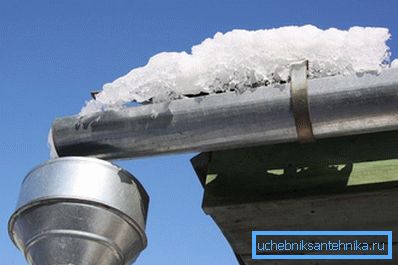
Tip! If the drainpipe consists of several pieces, then one side of each should be somewhat narrower in diameter. This will allow the segments to tightly connect into one.
Tools for work
To install the system, you will need scaffolding (a tower, several ladders), a perforator, a level, a sealant and all the necessary elements of the system in predetermined quantities. By installing gutters, pipes can be sent to water tanks to water the garden or take them to areas where the water does not pose a threat to the foundation.
A photo
